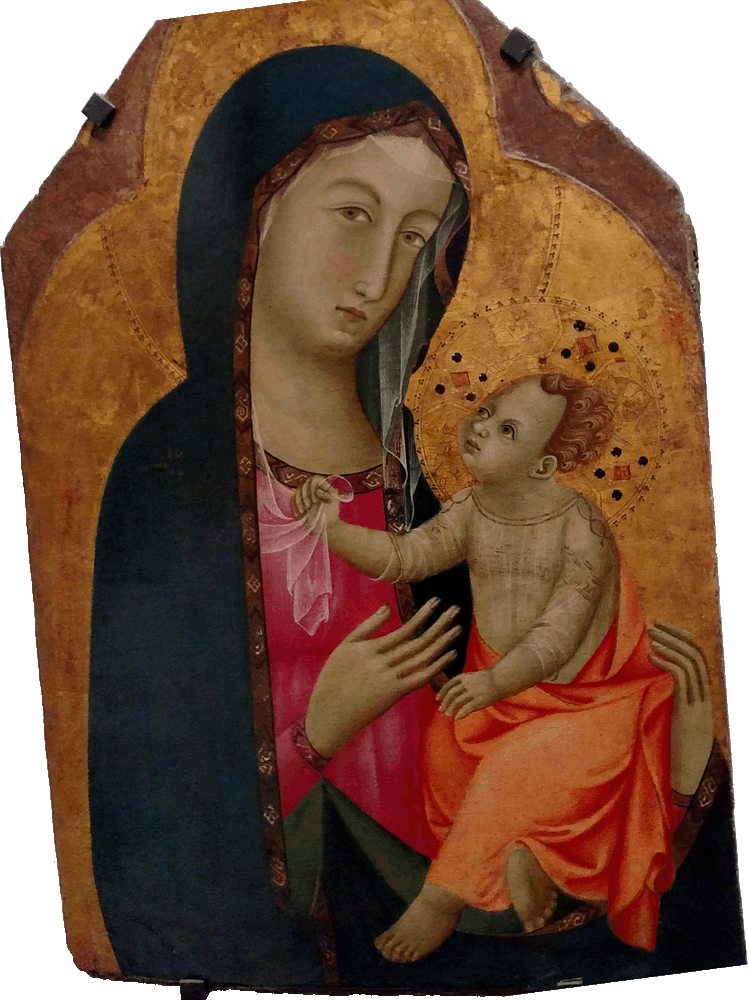
Maestro di San Torpè
Madonna and Child
1330-35
Tempera on wood
Uffizi Gallery, Florence, Italy
This is an example of a western work inspired by the Byzantine Pelagonitissa iconographic type. The child arches his head back to look on his mother's face and grabs onto her veil. Much of the artist's work is considered to be influenced by Cimabue, who had himself been trained by Greek artists resident in Florence.1
The date range cited above is supplied by the Uffizi's label. Some other sources that I consider less authoritative propose a date in the 1320s.
View this image in full resolution.
Read more about the Madonna and Child.
Photographed at the Uffizi by Richard Stracke, shared under Attribution-NonCommercial-ShareAlike license.